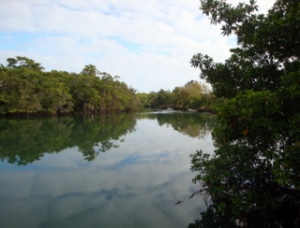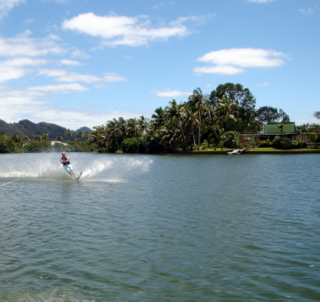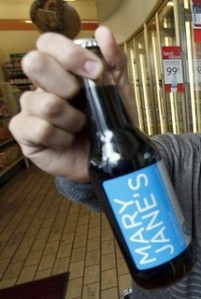My eldest and his wife own and run Naia, one of the top luxury dive boats operating today.
Good for them, but bad for me; they live in Fiji. I seldom get to see my eldest grandkids, Wrenn and Brigg. But wait, there’s more. The entire family decided to go to Fiji for Christmas. That includes my daughter, her husband, and daughter from Portland, Oregon, and Rona, a 16-year-old exchange student from Germany; my next in line, Chess, from near San Diego; even my former wife.
The Portland group arrived in Canyon Country (near LA). It seems their hired van did not show up, and they were lucky to get to the Portland airport. It was raining there. That being said, they arrived at Bob Hope Airport in Burbank in good shape. It was raining.
It is summer in Fiji, and with only a week’s notice the government decided DST was a grand idea. The problem? Nobody was quite ready, and Air Pacific had to adjust schedules quickly. When we arrived in Fiji, the cell phones still weren’t updated to the correct time. Good for us, though, as our flight left earlier than expected.
Tom Bradley International ticket counters and TSA baggage screening areas were jammed with people, bags, carts, and lines were long. Amazingly, Air Pacific had what amounted to a traffic director, and we were shunted to an empty counter and then to an adjacent, almost empty, TSA screening queue.
Flight FJ811 was delayed for an hour. Oh, I forgot to mention Jolly Old St. Mick, a major cyclone had arrived in Fiji. The Nadi (pronounced Nandi) airport was closed and Air Pacific personnel were constantly on the phone to Nadi asking technical questions like, “Is it gone yet?”
My son, Todd was on the phone to us and his house in Pacific Harbor was being blasted by wind and rain. The electricity was off in his whole area, and the Christmas turkey was in the now tepid freezer.
Mick split, and our 747 400 was up and away. We were in the top level of the plane, colloquially called “the bubble.” Air Pacific fed us a light dinner, and a nice breakfast. The ten hours in between were for sleep, movies, or music on individual screens.
Landing at Nadi was without incident,
and although we saw a few fallen trees, lots of big puddles, and a few signs askew, at least here, Mick had done little damage.
Customs and immigration were a breeze and a few bulas later we were on our way.
About a twenty-mile drive north to Latouka, Naia was waiting.
She is a luxury live-aboard dedicated to diving. Her Captain, Jioji, knows some incredible spots and this boat is in great demand by serious divers. Shortly, she’ll be on a 28-day charter with the goal of finally determining Amelia Earhart’s ultimate stop.
Although, diving was available, our first choice was the beach.
There are many different islands with lovely beaches, each with a nearby village. Each village has a Chief. At each stop, Naia’s spokesman (Not everyone can be a spokesman; that appellation is inherited, not bestowed.) went ashore to take the Chief a kava root.
They then do the saevu-saevu ceremony. The spokesman comes to the Chief on hands and knees, eyes downcast, and offers the root. A lot of Fijian goes back and forth; hands clap at the appropriate pauses; the Chief accepts the root, then kava is passed around. We now have permission to stay and loll on the sand.
I’m not sure exactly what happens at that ritual, but we’ll be attending one later this trip and I will report. I do know that drinking Kava is part of it, and as the eldest I must start the bowl around the room. I also know my lips may well numb out.
There is a singular scenic splendor that the fire, steam and smoke of the volcanoes left for us to gaze upon.
The skiff picks us up for lunch before the heat blasts us away.
Food on Naia is inventive and there are three choices for each meal that change every day.
Don’t miss the mahi mahi. It was the best and most perfectly cooked (moist and on the rare side) I have experienced.
I had the opportunity to dive and get a close-up of the multi colored coral, but, although certified, I took a nap instead. Don’t ask.
In the evening, when all were sharing photos, I passed mine around. Most were surprised as they hadn’t seen me in the water.
It was of one of the many photos on the lower walls. Don’t tell.
After our three-day excursion we returned to Latouka, the Captain and crew not employees, but friends. As I said, we all are part of the Naia family.
My son Todd and his wife Alexx have a lovely compound in Pacific Harbour.
They are on a river that empties into the ocean about 200 yards around a bend.
From Latouka to Pacific Harbour is a three-hour drive. The national speed limit is 40 mph. Trucks are limited to 36 mph. The trip south and then east passes sugar cane fields and some beautiful homes, but sadly, most of the villages are small cinder block boxes, some in worse shape than others. There is poverty, and many eke out a simple subsistence livelihood.
Follow the river upstream a mile and there is a bay perfect for waterskiing.
Home prices around the bay are rising, and for good reason. It is simply beautiful and, as a whole, Fijians are the friendliest people you’ll ever meet. “Bula” is the greeting and it comes at you from all sides. People walking along the road wave a hand and say it, people in stores say it. Bula is a national trait.
Of course living in a third world country does have a few hang ups. Because of the cyclone we lost water pressure a couple of times. The Fiji Meteorological Service chastised citizens for not paying attention to warnings about Cyclone Mick’s approaching damage. BUT, the Met Service was closed on Sunday, so no info about the immediate approach could be gathered. All this aside, perhaps the most bothersome in this beautiful country is the price of Cuervo Gold Tequila. One hundred dollars!!! That’s US dollars. It’s 170 Fijian. Better if you augment your visual splendor with vodka.
Christmas with the family, now in the books as FFF, Fijian Family Festival,
was a special treat, nevertheless the Lovo was certainly equivalent. Food is cooked in an underground oven of heated rocks.
Expect a variety of foods wrapped in banana and palm leaves, covered with earth, and coming out after a few hours as tender meats, chicken, seafood, root crops, and tasty greens cooked in coconut cream. Coconut cream is not easy to come by. Forty-eight coconuts were shredded
and then the shredding mashed and squeezed to get the milk.
When the food is unveiled it is pretty, pretty hot. Buna, who is part of the Fiji family, refuses to use gloves to snatch it, so cold water is there for her between grabs.
Next we all gather and the saevu-saevu begins. Kava is squeezed into a big bowl,
then transferred to a smaller bowl to be offered to the eldest on down. When the bowl comes to you,
you clap cupped hands once. Then it all goes down the hatch. Next, cupped hands clap twice, and a word that sounds like “motha” is spoken or shouted depending on how much kava you have already had.
Now a bolt from the blue. The drink that has had ceremonial usage for thousands of years in the pacific islands has hit the US, Mary Jane’s Relaxing Soda with kava, sugar and passion flower extract is now on the market.
Get down.
If you don’t know the Edwards in Pacific Harbour, there is a charming hotel, The Pearl, within walking distance from their home.
It’s on the beach and a lovely place to HQ when you visit Fiji
Thoughts:
I loved the sign that said “Beware of Gravity Fed Coconuts.”
Most Fijians do not wear shoes. The bellman at the hotel will most likely be barefoot. Both men and women can be seen walking down dirt roads barefoot. And that makes me wonder if, after walking on the dirt, they have to put on shoes when they enter the house.
We’ll miss Fiji and the Fijians.

Geoff Edwards is a veteran radio and television broadcaster. He has an Emmy for best talk show host, and an Emmy nomination for best Game Show Host. Besides hosting network game shows, he has appeared as an actor in numerous television shows and movies. In radio, he was top rated in Los Angeles on both KMPC and KFI.
With all of this, Geoff never lost his thirst for travel. He has been cruising since 1969 and has twice cruised around the world. From Morocco, to the Marshall Islands, and even to Branson, Geoff ‘s wit adds a special flavor to his travel commentary. Michael, Geoff’s wife, travels with him and records all on film.
Today, Geoff writes for several national magazines, currently broadcasts a weekly travel report to Monterey’s KION morning show, and does on “location” special travel broadcasts for CRN, the Cable Radio Network.





























